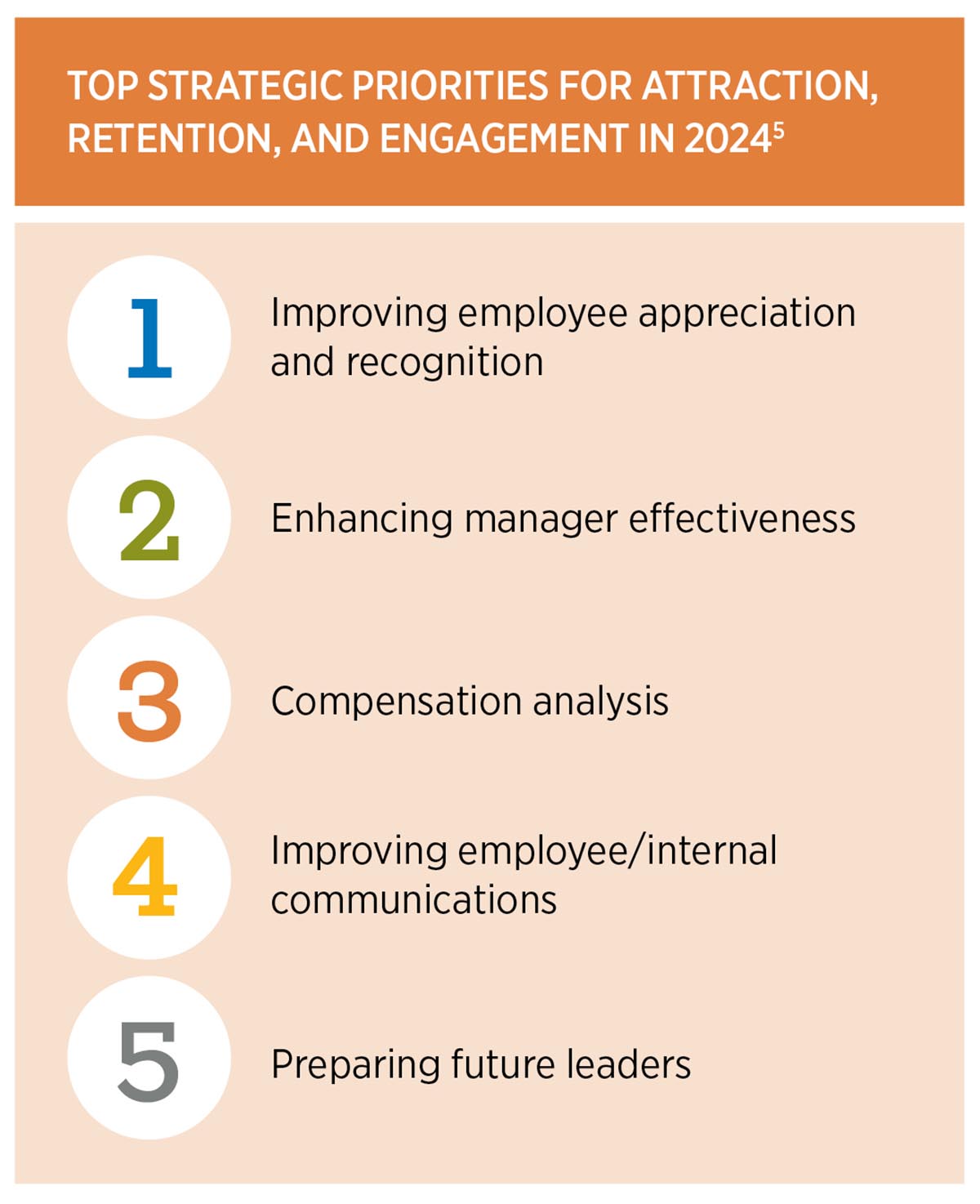Understanding what compensation information is required for disclosure, and when to share it in the recruiting and hiring processes, is more than a compliance issue. This knowledge also instructs strategies for employee compensation and supporting communications. Decisions about pay ranges and whether additional information should or should not be disclosed help to define the EVP. The goal is to align messaging with stated values, and effectively manage the resulting narrative and dialogue among current, prospective and former employees.
Widely understood but worth repeating is the need to carefully consider the requirements described in job postings. Some organizations are succeeding by inviting marketing and operational teams to collaborate with HR on this effort. Bringing different perspectives when defining qualifications for postings can achieve better results when assessing what's truly essential. Realistic expectations for required skills and credentials combined with a focus on the EVP will help attract candidates who are well matched, and promote employee engagement once they're hired.
Managing talent, rewarding achievement and building from within
Opening the door to pay transparency will likely come with growing pains. Pay transparency invites comparison and can erode morale, wherever there is a real or perceived disconnect between pay, tenure, or contribution. Inevitably, some employees will be demotivated if they believe they're undervalued, including high and low performers. But if employees are secure in the knowledge that their pay is equitable and anticipate opportunity, well-designed performance-based incentives and career advancement initiatives can strengthen job attachment and increase employee engagement.
As part of their attraction and retention strategy, many organizations may need to reevaluate and update how contributions to success are defined and acknowledged. Technical skills and metric-based performance neatly align with reviews and reward-structured employees. But other skills and professional attributes are also vital. Since the pandemic employers have started to realize the importance that interpersonal skills bring to the organization's culture.
A related concern is that a wide pay range, which is common to a formal salary structure, can invite discrepancies. Fine-tuning total rewards supports fairness while helping to enhance employee engagement, alleviate risk and boost performance. Currently, nearly half of employers use salary progression (48%) or internal equity adjustments (47%).3
Career pathing and internal mobility allow employees to envision a successful future with their employer. For organizations that are able to regularly assess employee strengths and contribute to an ideal work experience, this often translates to an advantage over their competitors. Candid discussions on what people want and what the organization can deliver should be based on clear information and mutual understanding.
Communication is always key. Career expectations and interests within the workforce are likely to differ widely — and need to be well defined for each job candidate or employee. Not all candidates want to step into a higher role, but some may consider leaving if growth opportunities are uncertain.
Manager support and cross-training programs are significant resources for helping employees to identify, understand and consider their options for realizing their version of career success. According to a 2022 study, 73% of executives believe organizations have a responsibility to provide career management programs, yet only 27% have them in place.4
Employees are more committed to effective leaders and good managers. So an essential component of career guidance is a succession plan for developing leaders from within. Without a strategy, there's a greater likelihood of missing out on chances to engage and retain talent, which creates risk if gaps in leadership persist.
Maintaining strong ties with succession candidates starts with identifying essential employees who embody organizational values and helping them prepare to take on new roles. Upskilling managers on communicating effectively and aligning their approaches with the EVP eases workplace friction, and serves as a guidepost for developing and enhancing key leadership competencies. When employers provide comprehensive training and tools, and leaders update performance goals to resonate with the EVP, they also demonstrate an ongoing commitment to the values it represents.
Engaging employees throughout all phases of their careers
Strengthening relationships between new employees and those who are winding down their careers is a critical priority for attraction and retention strategies, yet it's woefully overlooked. From hire to retire, the EVP experience should be equitably designed for the entire workforce. Those who are long tenured represent a distinctly important segment of the workforce because they can offer the value of cumulative organizational knowledge and experience.
Innovative retention solutions such as shorter work weeks, more vacation time, flexible schedules, remote work and mentoring roles help to energize, engage and retain this demographic group. Also, changing their routine responsibilities and easing job pressures often creates an opportunity to find a deeper purpose in work.
New citizens and recent immigrants are another important segment of the talent pool, but they may need time to assimilate, especially if their native language and culture are distinctly different. Onboarding assistance beyond the walls of work, such as English language training and assistance with setting up bank accounts, extend the reach and impact of a meaningful EVP. These investments add another facet to the attraction and retention strategy while demonstrating a commitment to inclusive support for the entire workforce. Higher employee engagement often follows.
An emphasis on career growth and transparency
An EVP that not only attracts new hires, but also fulfills its promise through the lived work experiences of employees is a competitive necessity. Greater pay transparency and interesting career prospects are top priorities.
Data-driven employee benefits combined with a compensation strategy that's compliant and equitable, when well-communicated, engage the workforce by showing a commitment to their future from day one. High standards for accountability to all employees should be apparent. Through investments that improve employee compensation structures, communications and workforce development programs, employers can boost performance across the entire business.







